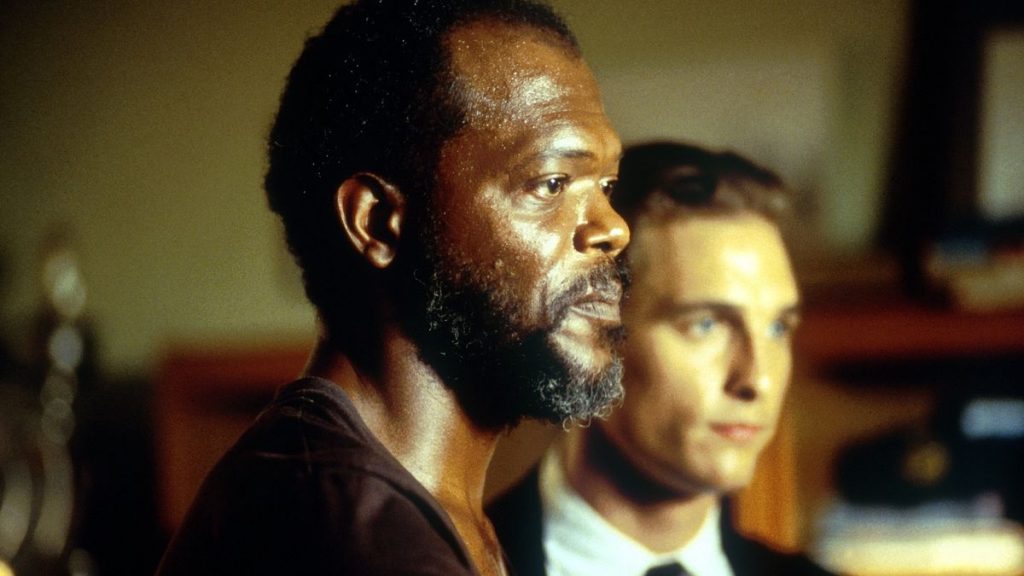
Parents are urged to learn more about the film before taking their young children with them. R – Restricted Under 17 requires accompanying parent or adult guardian. Some material may be inappropriate for pre-teenagers. PG-13 – Parents Strongly Cautioned Some material may be inappropriate for children under 13. May contain some material parents might not like for their young children. Parents urged to give "parental guidance". PG – Parental Guidance Suggested Some material may not be suitable for children. Nothing that would offend parents for viewing by children. The MPA film ratings are as follows: Rating block/symbol It is administered by the Classification & Ratings Administration (CARA), an independent division of the MPA.
#A TIME TO KILL MOVIE PARENTS GUIDE CODE#
Introduced in 1968, following the Hays Code of the classical Hollywood cinema era, the MPA rating system is one of various motion picture rating systems that are used to help parents decide what films are appropriate for their children.
#A TIME TO KILL MOVIE PARENTS GUIDE TV#
Other media, such as television programs, music and video games, are rated by other entities such as the TV Parental Guidelines, the RIAA and the ESRB, respectively. Non-members of the MPA may also submit films for rating.


The MPA rating system is a voluntary scheme that is not enforced by law films can be exhibited without a rating, although most theaters refuse to exhibit non-rated or NC-17 rated films. The system and the ratings applied to individual motion pictures are the responsibility of the Motion Picture Association (MPA), previously known as the Motion Picture Association of America (MPAA) from 1945 to 2019.

Still, a great movie to check out if you're a fan, but don't expect miracles.The Motion Picture Association film rating system is used in the United States and its territories to rate a motion picture's suitability for certain audiences based on its content. It's disappointing, certainly, but only because I love the first film so much, and wanted more of that greatness, no matter how impossible it is to achieve. All in all Sin City: A Dame to Kill For is not a bad film by any means. And thus the distinct visual style of Sin City is shattered. Here it seems that every single frame has a splotch of colour in it, usually for no reason, they just wanted colour in their frames. The original used colour carefully, for emphasis, for popping up important details. Here it means more colour spliced into the black-n-white, and it's very distracting. Aside from the material, the biggest problem is the common sequel problem where they want to do the same that worked so well in the original, but with more oomph. They clearly wanted to give Jessica Alba something more to chew with her character, but it just doesn't have that edge. Nancy's Last Dance, our last story, is unfortunately the weakest story by far. A fine story and I could see this as an original Sin City story. Both Joseph Gordon-Levitt and Powers Boothe have amazing screen presence and as they're pitted against one another throughout the night the stakes keep getting higher and higher, with satisfying results. The Long Bad Night, the first of the new stories, works because of its actors. It doesn't have much of a plot, and the supporting characters are nonexistent, but it's a good opening piece. The second adaptation story, Just Another Saturday Night, is really nothing more than an Ode to Marv (Mickey Rourke), and that's okay in my books.

Just as good as the stories in the original film with same great quality acting, hardcore action and brutal visuals. Considered to be one of the better stories in the original comic books, it's a good thing they still had one such story to wrap their movie around. Tellingly Miller was actually called back to write two new stories exclusively for the film. Not that the stories used here are bad, they're just not as great as the ones used in the first one. Unfortunately they decided to stick all the best stories into the first film, thus guaranteeing its success, but leaving the possible sequel without much material to use. Frank Miller's Sin City universe is a rich and interesting setting, and as the first Sin City film proved, it translates to the silver screen beautifully. Sin City: A Dame to Kill For is not a bad idea on paper.


 0 kommentar(er)
0 kommentar(er)
